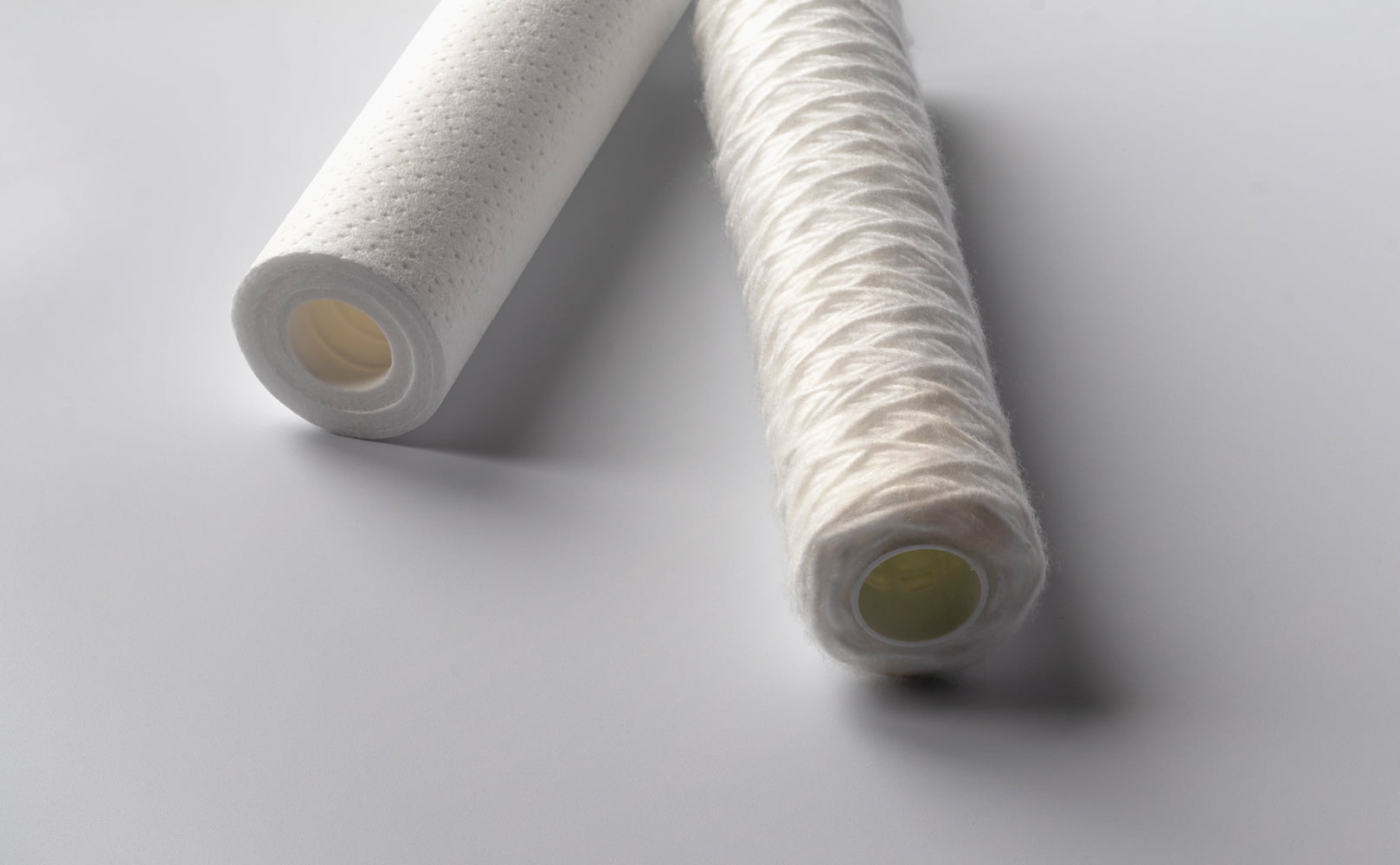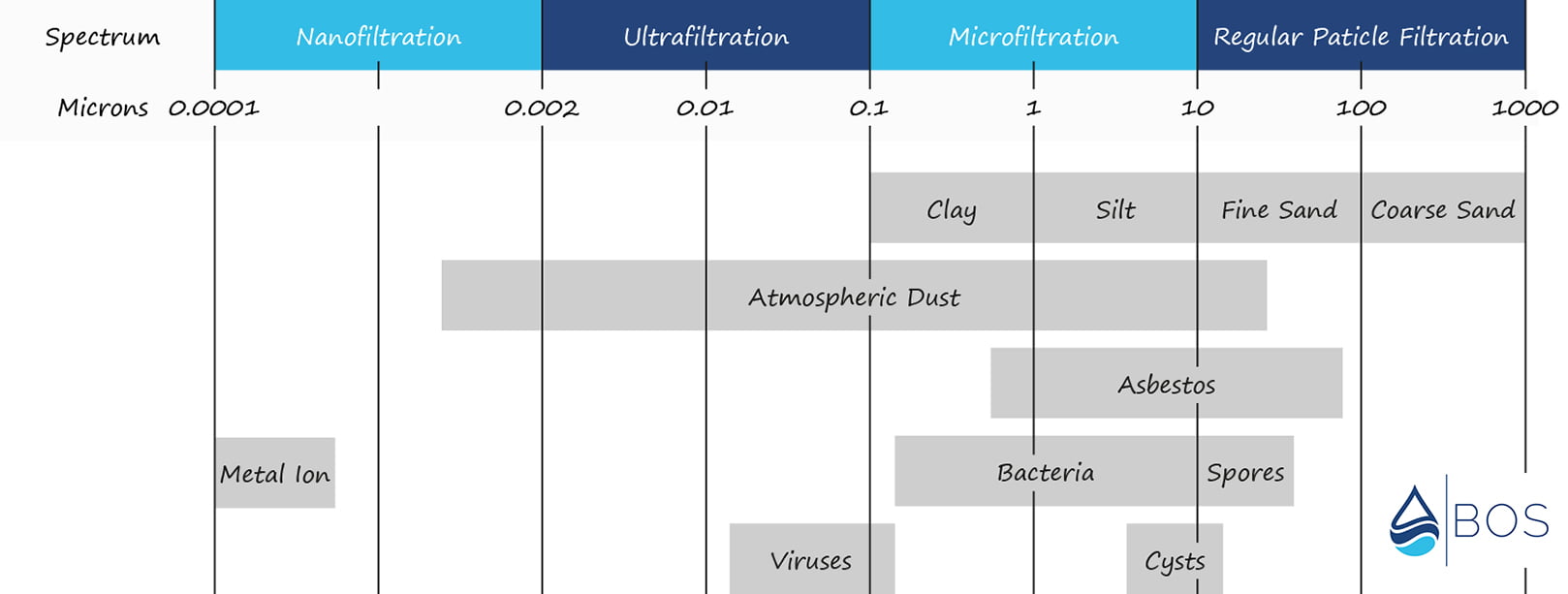5-Micron vs 10-Micron Water Filter – Which Should I Choose?
Written by: Gene Fitzgerald // Last Updated: Aug 15, 2023
This page may contain affiliate links. If you buy a product or service through such a link we earn a commission at no extra cost to you. Learn more.
Choosing the right micron size for your water filters is easier than it seems if you’ve never done it before.
Micron ratings can be confusing at first, but once you figure out what they indicate and what to look for, it should be easy to identify the exact products you need.
In this article, we’ll discuss 5-micron vs 10-micron sediment water filters. Which should you choose?
Key Takeaways
- Test your water in order to find out if a 5-micron or 10-micron sediment filter is needed.
- A 10-micron sediment filter removes certain types of cysts and bacteria, dusts, sand, silt and other sediments, asbestos, and even certain molds.
- A 5-micron sediment water filter traps all of the above plus even more pathogens.
- Note that any sediment filter with a lower micron rating tends to clog faster which can affect water pressure and flow rate.
Micron Rating Explained
A micron rating is an indicator of how well a sediment filter can remove floating contaminants. In particular, it indicates the smallest size of a contaminant that will be successfully caught by the filter.
Filters with a smaller micron rating can capture a wider range of contaminants, but they come with some downsides – more on that below.
How Large Is a Micron?
A micron is equal to 0.001 mm. Objects around 50 microns large tend to be visible to the naked eye, while those around 1 micron are not. Your hair is probably around 50-60 microns thick. Of course, some types of water contaminants can be much smaller than 1 micron.
Nominal vs Absolute Micron Ratings
A sediment filter’s nominal micron rating provides a rough estimate of the size of contaminants it can remove (usually 70 to 80% of them).
On the other hand, absolute micron ratings are a precise measurement and are guaranteed by the manufacturer. You should therefore focus your search on absolute ratings if possible.
What Are Micron Water Filters?
A micron water filter is a water filter that’s been tested to confirm its micron rating. Manufacturers will make that rating known on the packaging and in product descriptions, which can help you narrow down your search once you know what you need to remove.
5 vs 10-Micron Water Filters – Which Should I Choose?
Before starting your search for the ideal sediment water filter for your home, you should have your water properly tested. This will show you what types of contaminants you’ve got present, and will help you identify the right filters to purchase.
The difference between 5 and 10-micron sediment filters is not that large, and you should only use a 5-micron filter if water testing has identified the presence of contaminants at that size in larger quantities. Don’t start with a smaller rating by default, as this can lead to pressure problems.
And even if most of the contaminants in your water supply are around the 5 to 10 microns mark, you may still want to invest in some larger filters as an initial filtration step, such as 50 or 100-micron models. This will help capture larger contaminants and prevent them from clogging up your smaller filters, improving their lifespan.
Have Your Water Tested!
Always get your water tested before starting your search. It doesn’t cost much, and it usually takes a couple of weeks to get your results from the lab. Once you have them in your hands, you’ll know exactly what to invest your money in.
Here are some examples of contaminants that can be caught by 10 and 5-micron sediment water filters.
10 Micron
- Certain types of bacteria
- Certain types of cysts
- Asbestos
- Dusts
- Sand
- Silt
- Certain molds
5 Micron
All of the above plus
- Even more bacteria
- Even more cysts
Water Pressure
The main reason you should start with the largest possible filter and work your way down from there is that you risk creating water pressure problems otherwise. Ideally, you should start with a sediment filter rated for 50 microns or so and start decreasing the sizes of subsequent filters added to the chain. Pay attention to water pressure issues, and if you notice anything out of the ordinary, you might have to rethink your configuration.
If you have any questions about 5-micron vs 10-micron sediment filters please don’t hesitate to leave a comment below!
Information provided on BOS is for educational purposes only. The products and services we review may not be right for your individual circumstances.
We adhere to strict editorial guidelines. Rest assured, the opinions expressed have not been provided, reviewed, or otherwise endorsed by our partners – they are unbiased, independent, and the author’s alone. Our licensed experts fact-check all content for accuracy. It is accurate as of the date posted and to the best of our knowledge.



